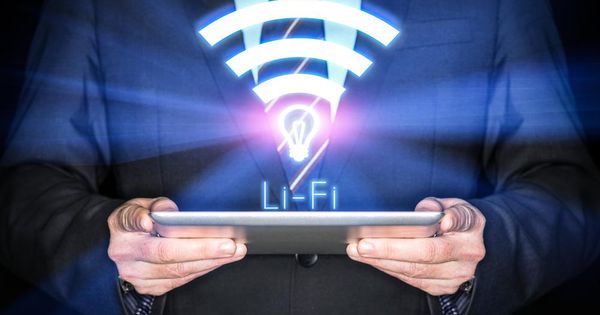LiFi: everything you need to know about this new technology
Speed, low latency, high density. These are the three key factors that determine the new reality, network giants are trying to make possible, this decade. With the introduction of 5G and Wi-Fi 6, new standards are implemented, changing the way we share data once more in industries, companies and homes. LiFi is built in this direction.
Changing the working standards of radio frequency (RF) equipment is allowing devices to connect at much higher speeds to the internet, allows more people to share content simultaneously and reduces latency to a point, where industrial equipment could rely on it. This is a great shift in the accountability of wireless equipment, that will cause an upraise in the market share that wireless industry will acquire in the decade we are in.

LiFi integrates all new standards to achieve maximum speeds and low latency. At the same time, it can support a lot of users and work under conditions that Wi-Fi or 5G is problematic. LiFi utilizes the visible light spectrum to transmit data, instead of radio frequencies. The user needs to be near a LiFi LED ceiling or desk lamp to receive data through a LiFi -XC receiver. Being bidirectional instead of omnidirectional, makes LiFi extremely secure. Also, light signals are contained into the room, so no other receiver can hack the network from outside.
LiFi receivers are essential, since mobile integration is still under research. LiFi enabled mobile devices are couple of years away from being introduced to the general public. While everyday use of LiFi is not yet needed, in many situations, LiFi can prove to be only wireless option. In fact, airlines have tested the use LiFi to provide connectivity, since it is safe to use near sensitive equipment. Same applies to hospitals, since this technology doesn’t use radio signals, it doesn’t tamper with medical equipment.
Having devices communicate using visible light optical waves means that wireless connectivity doesn’t need to be sacrificed in airplanes or in hospitals. Moreover, any concern that is linked to health problems caused by the intense exposure to RF signals doesn’t apply to LiFi or any VLC technology.
The Visible Light Spectrum is a spectrum that remains mostly unused. Visible Light Communications for data transfer is a field researched by many companies and scientists the past decades. Several applications have implemented those concepts into real practice but none of them has reached the level of network integration of LiFi. LiFi is leading this pristine spectrum conquest, with giant partners and legit technology backing it up.

Communicating with existing, high end network protocols such as PoE+ guarantees that the maximum available internet speed will be used in a LiFi driven network. LiFi has then developed its own standards to translate all data into light sequences. This means that in a network that does not communicate with any remote servers on the internet, a LiFi network would be impenetrable.
Having a network that is convenient, safe and low energy to maintain, is why this new technology has found giant partners and is predicted to have a bigger market share. Energias Market Research predicted that the LiFi market is expected to reach 80 million dollars by 2023. Imagine a building that connects users and IoT devices to a network via ceiling LED lighting at very high speeds with no latency, or imagine users using LiFi on the street. LiFi can provide fast connectivity both during the day and night and be very low cost.
This is why a technology like LiFi is not far from being implemented in a large scale. The efforts to make it ideal in different conditions range from pure research to financial planning. Any future implementation, any engagement with new partners, and any new acknowledgment ofLiFi technology, brings us close to a safer and greener future of network applications.

